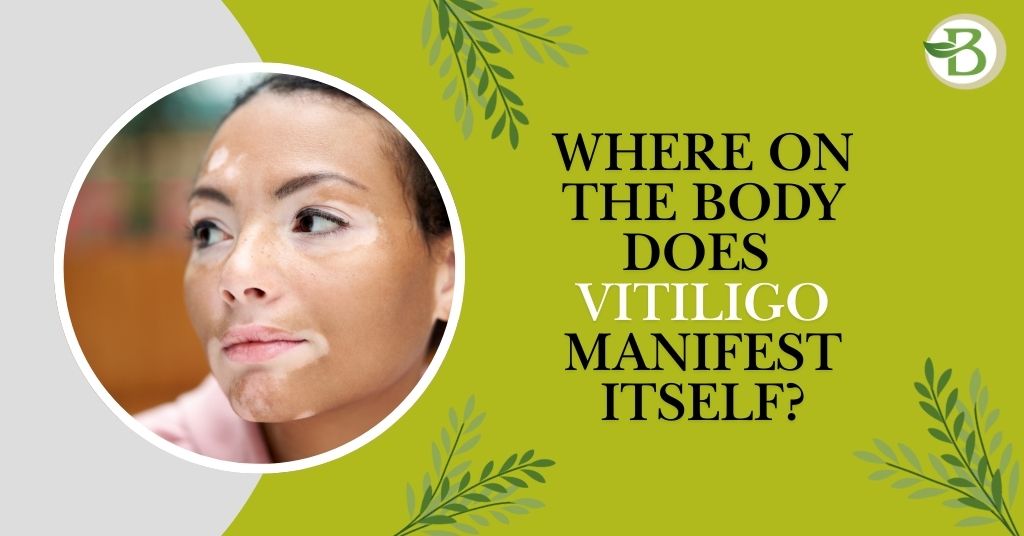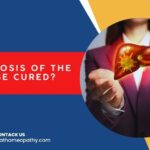Can vitiligo spread, and How does it appear?
Skin problems are always very personal concerns, no matter if they are in the form of acne, psoriasis, or other skin conditions. They are very closely associated with the self-image, psychological health, and well-being of an individual. The sensitivity surrounding these skin conditions arises from both the physical discomfort they cause and the emotional impact they can have. Today, we will focus specifically on one such skin condition: Vitiligo.
Vitiligo is a skin disorder that is manifested by depigmentation of the skin in some parts, which results in the formation of white or light-colored patches. These patches may appear anywhere on the body, but how Vitiligo presents itself can be very different from one person to the other. It is important to know how Vitiligo spreads over the body and how it progresses so that it can be treated well.
Most Vulnerable Skin regions for the development of White Patches due to Vitiligo
Vitiligo may appear anywhere, but it’s most often seen on the skin near the eyes, mouth, elbows, wrists, hands, and ankles. It usually covers small areas, but it’s rare for someone to lose all their skin color.
- Face and Neck:
Vitiligo usually appears as white spots on face, especially around the eyes, mouth, and nose, but it can also show up on the neck near the hairline, lips, and ears. The noticeable nature of white patches on the face may lead to emotional and mental stress because of society’s beauty standards.
- Hands and Feet:
Vitiligo often affects the hands, fingers, feet, and toes. As skin present in these areas is more vulnerable to environmental influences such as pollution, sun, and other such factors that may trigger Vitiligo.
- Elbows and Knees:
Joints, such as the elbows and knees, are among the most common places for vitiligo spots. These areas are more prone to friction and slight injuries, which can sometimes lead to the development of vitiligo spots.
- Scalp and Hair:
Vitiligo can also appear on hair roots, like your scalp, turning the hair white or grey due to low melanin. It can also impact the eyebrows, eyelashes, and beard, leading to spots of hair that have lost their color.
- Arms and Legs:
The white spots on legs and arms are often the first areas to show signs of vitiligo, especially those that are more visible, like the forearms and the lower legs. The way the patches are spread out can be different, sometimes appearing the same on both sides of the body.
- Back and Chest:
Bigger white patches on skin might appear on the back, chest, and belly. These areas can have patches or larger areas of skin that have lost their color.
- Private and sensitive Areas:
Vitiligo can affect the private areas, inner thighs, armpits, and groin, which can be distressing due to their sensitivity and effects.
These were the most common places vulnerable to the development of white patches on skin. However, some common patterns are observed in the appearance of these patches over the skin, and they can be classified into various types.
Various types of vitiligo based on Appearance
The patterns of white patches on skin can vary widely, and the distribution of these patches often determines the type of vitiligo. Here are the typical patterns of vitiligo:
- Focal Vitiligo: This type of pattern involves one or a few small, localized patches of depigmentation. It spreads less widely than other types and is often limited to a specific area.
- Segmental Vitiligo: In this type, patches appear on one side of the body. Segmental vitiligo often begins at an early age and tends to progress for a year or two before stabilizing. After that, new patches hardly appear.
- Generalized Vitiligo: This is the most common pattern, where depigmented patches are distributed symmetrically across various parts of the body, often on both sides. Common areas affected include the face, hands, and feet.
- Acrofacial Vitiligo: This type affects the extremities and face, particularly around the fingers, toes, and mouth. The depigmentation is usually more pronounced in these areas.
- Mucosal Vitiligo: In this pattern, depigmentation affects the areas such as the vitiligo on lips, gums, and genitals.
- Universal Vitiligo: This is a rare form where more than 80-90% of the body’s skin loses its pigment.
- Trichrome Vitiligo: This pattern features three distinct skin tones: the normal skin color, a lighter shade, and the depigmented areas. It shows a transitional area between normal and fully depigmented skin
Each pattern can have different onset ages and progression rates, and the extent of depigmentation can vary significantly between individuals.
The Emotional Consequences of Vitiligo
The visibility of the disease, especially skin depigmentation in areas like the face or hands, often leads to significant emotional and psychological effects of vitiligo. This condition often meets misconceptions, and they are the reason for the stigmatization of people with this condition, as well as the feeling of embarrassment or anxiety.
The treatment of vitiligo patches requires patience and understanding of the fact that the disease might have a detrimental impact on the patient’s self-esteem and psychological state.
Exploring the Homeopathic treatment option for Vitiligo
The homeopathic treatment for white spots on skin is chosen based on a detailed analysis of the person’s condition, including the severity and spread of vitiligo, their medical and family history, any related diseases, environmental and emotional factors, and past treatments. The goal is to slow down the disease and encourage the body to produce melanin, stopping the loss of melanocytes.
For rapidly spreading vitiligo, homeopathy can help manage the condition and address the underlying causes. It may also help balance hormones.
The right homeopathic medicine is selected considering various factors, including the type and severity of vitiligo, possible causes, genetic risks, emotional state, behavior, and physical traits like sensitivity to heat and food preferences.
Barat Homeopathy Clinic- offering the best treatment for vitiligo
Homeopathy is a complete system of treatment that is based on the principle of treating the patient, not the disease. In Barat Homeopathy Clinic, the homeopathic doctors who have a lot of experience in this field provide treatment according to the symptoms and general health condition of the patient.
It is time for an effective treatment for white spot on skin and not allow the condition to control your life anymore. Contact Barat Homeopathy Clinic today and begin your path to getting clear skin naturally. Get ready to accept the complete mind and body concept of healing and learn how homeopathy works.


